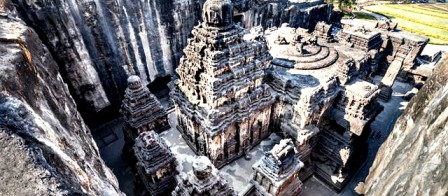Hinayana And Mahayana Buddhism – History Study Notes & Stuff
Difference between Hinayana And Mahayana Buddhism
For many centuries after Buddha's death, Buddhism continued to prevail as before. But during the arrival of the first century AD, new doctrines emerged, which differed from previous orthodox Buddhism in ideas and practices.
These schools were divided into two yanas or 'vehicles' or 'paths'. These two are as follows: Hinayana and Mahayana. A 'yana' vehicle is mentioned that takes a person from miseries to reach enlightenment. In the view of the common man, a Hinayana is a lesser vehicle while Mahayana is a greater vehicle.
Hinayana:
• Early Buddhist teachings gave more importance to self-interviews and effort to attain nirvana.
• Hinayana's ideal is personal salvation, thus it is considered a lesser vehicle.
• The Hinayana or Theravada doctrine considers the Buddha's original teaching, or the old respected path of theras.
• They do not believe in idol worship.
• Hinayana teaches that, the path for a person to attain salvation goes through self discipline and meditation.
• Ashoka patronized Hinayana.
• Pali, the mass language, was used by Hinayana scholars.
• It is also called the “Abandoned Vehicle”, the “Deficient Vehicle”, Stharvivada or Theravada (doctrine of elders).
• Hinayana emphasizes religious karma and the law of karma.
• Hinayana is the ideal arhat, who strives for his liberation.
• Hinayana considers Buddha to be a man of extraordinary knowledge, but does not worship him simply because he believes him to be a common man as well.
• It has developed around acts of Buddha.
• Hinayana believes in salvation by action, that every human being must work for his own salvation.
• The scriptures of Hinayana are written in Pali, and are founded on Tripitaka.
• The Hinayana or Theravada traditions are followed in Sri Lanka, Cambodia, Laos, other South-East Asian countries.
Mahayana:
• The Mahayana strongly believes in the spirit of the Buddha's teachings.
• The Mahayana scriptures are written in Sanskrit as sutras.
• This form of Buddhism was recognized during the time of Kanishka and Third Buddhist Council recognized these two forms of Buddhism.
• It believes in salvation through faith.
• The Mahayana has evolved around the symbol of the life and personality of the Buddha.
• The Mahayana idea is salvation for all, that is why it is called as greater vehicle.
• Mahayana holds the law of karuna / compassion over and above the law of karma.
• The Mahayana follow the ideals of the Bodhisattva / Savior - who is concerned about the salvation of others.
• This sect believes in the divine attributes of Buddha and thus believes in idol worship.
• It is also known as the Bodhisattva vehicle.
• Mahayana Buddhism is spread in India, China, Japan, Vietnam, Korea, Singapore, Taiwan, Nepal, Tibet, Bhutan and Mongolia. Tibetan Buddhism is only a tradition of Mahayana.
• The basic principles of Mahayana doctrine are based on the possibility of universal liberation for all beings. It is therefore considered a "great vehicle".
• The doctrine of "Bhakti" has developed as a feature of Mahayana Buddhism.
• Nagarjuna was the most outstanding exponent of Mahayana Buddhism.
If you want us to add any more details to this article, please do let us know in the comments below.










0 Comments